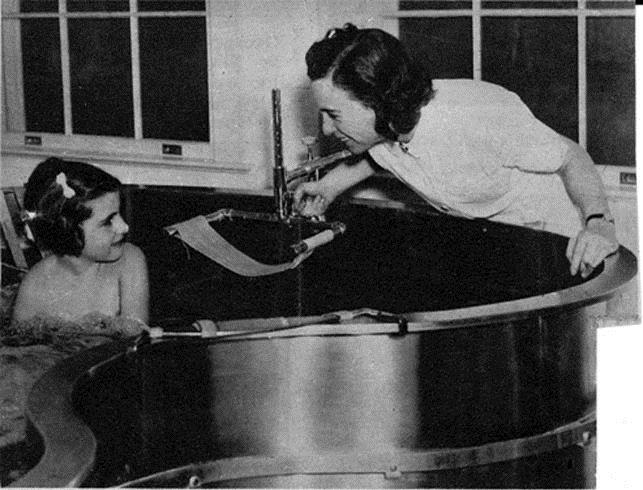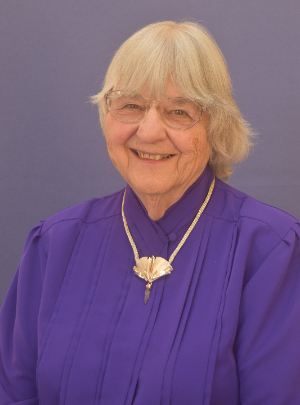Polio Survivor, Virginia Wade, Shares Her Story

On the evening of August 31, 1939, six-year-old Virginia Wade of Westfield, felt sick and went upstairs to her bedroom while the family ate dinner. Coloring in bed, she reached for a crayon -- and her hand went into spasm. Ginnie’s scream of pain brought her parents rushing in. The hastily-called pediatrician made a diagnosis that changed her life: polio. After leaving the isolation ward in a Plainview hospital, no longer contagious, Ginnie arrived at Children’s Country Home in Mountainside, the predecessor of Children’s Specialized Hospital. It is likely she was the first case of polio at Children’s and a very early case in the epidemic soon to sweep New Jersey.
Ginnie entered Children’s in a full right leg cast. Her left hand was also affected. She pushed herself about in a wheelchair and received the rehabilitative therapies of the day, also benefitting from the advanced Hubbard Bath – the first in use on the East Coast. In the bath, as warm water circulated in jet tubes, a therapist moved her right leg. Today, Ginnie still recalls Children’s “soft yellow walls” and the glass-enclosed sunroom where she stayed. She and her roommate, a burn victim about her age, “got along famously.”

Ginnie made good progress due to the expert care at Children’s; the cast was replaced by a brace and she began to walk again. The seven-year-old returned home in June of 1940, after a stay of nine months. Soon the brace came off permanently. Ginnie jumped back into life with verve. Though her right calf is one-third the size of the left, she became an athlete, making first honorable mention as center halfback in field hockey in her senior in high school. College and graduate school in social work followed. Ginnie’s first job was in the polio clinic of a children’s medical center in Boston. “I was walking in high heels, with a slight limp. People would ask if I’d had a skiing accident. No one dreamed I’d had polio.”
Ginnie reflects on the kindness and dedication of the staff at Children’s Country Home. Though the average stay was 45 days, she was allowed to recuperate there for nine months. “People understood that my mother couldn’t give me the attention and treatment I needed, so they kept me for much longer. That speaks volumes.”